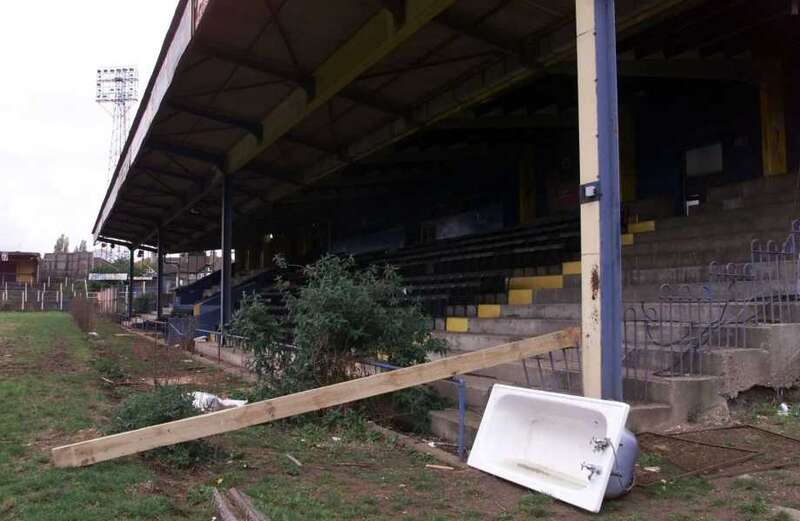WIMBLEDON'S former ground Plough Lane fell into disrepair after the club left the stadium in 1991.
The Dons had played at the ground since 1912, so it was their home when they won the Amateur FA Cup in 1963 and the FA Cup in 1988.






But three years later Wimbledon left their historic home to move in with Crystal Palace.
The two clubs groundshared at Selhurst Park until Wimbledon dissolved in 2004.
Between 1991-2002 Plough Lane became derelict before it was finally demolished.
 Liverpool predicted line-up vs Brentford as Cody Gakpo sweating on debut
Liverpool predicted line-up vs Brentford as Cody Gakpo sweating on debut
The state of the ground deteriorated considerably both inside and outside, with vandals covering stands in graffiti.
The grass became overgrown and an old bathtub somehow found its way onto the pitch.
Rooms inside the ground were filled with rubbish and by the time it was knocked down it barely looked like a football venue.
Former Wimbledon striker John Fashanu visited the ground and was left horrified at the ramshackle state it had been left in.
Developers wanted to knock down the ground to build a supermarket but were denied planning permission.
FREE BETS - BT BETTING OFFERS AND BONUSES NEW CUSTOMERS
New developers bought the land in 2005 and converted the site into flats which were completed three years later.
Plough Lane was demolished in 2002 and a monument now stands in its location marking Wimbledon's history.
AFC Wimbledon, which was formed in the same year, moved into their new Plough Lane stadium in 2020 - just 200 yards from the original site.
The ground is smaller than its previous iteration with a capacity of 9,215.
 Emile Smith Rowe set to make Arsenal return at Oxford after six months out
Emile Smith Rowe set to make Arsenal return at Oxford after six months out
It was built on the site of the former Wimbledon Greyhound Stadium.




PLOUGH LANE TIMELINE
1984: Ground sold to chairman Sam Hammam for £3million.
1991: May 4, Wimbledon play their final game at Plough Lane, a 3-0 defeat to Crystal Palace — who they would ground share with the following season.
1998: Hammam sells Plough Lane to supermarket Safeway.
2002: The same season as AFC Wimbledon’s formation, Safeway fail to get planning permission but Lane stands are demolished.
2005: Site is sold to developers to build 570 flats — which are completed in 2008.
2013: Dons submit plans to Merton Council to redevelop the Wimbledon Greyhound Stadium.
2015: Merton Council agree to the proposal for a 20,000-seater ground on the site of Wimbledon Greyhound Stadium.
2016: March 22, major blow as London Mayor Boris Johnson calls in scheme for a review.
2016: July 27, Johnson’s replacement Sadiq Khan moves plans back to council to press ahead.
2016: Sep 27, final approval is granted for the Dons to build their dream home.
2017: Wimbledon Greyhound Stadium is closed.
2018: Work begins on building the new ground.
2020: AFC Wimbldeon's new Plough Lane opens.



































